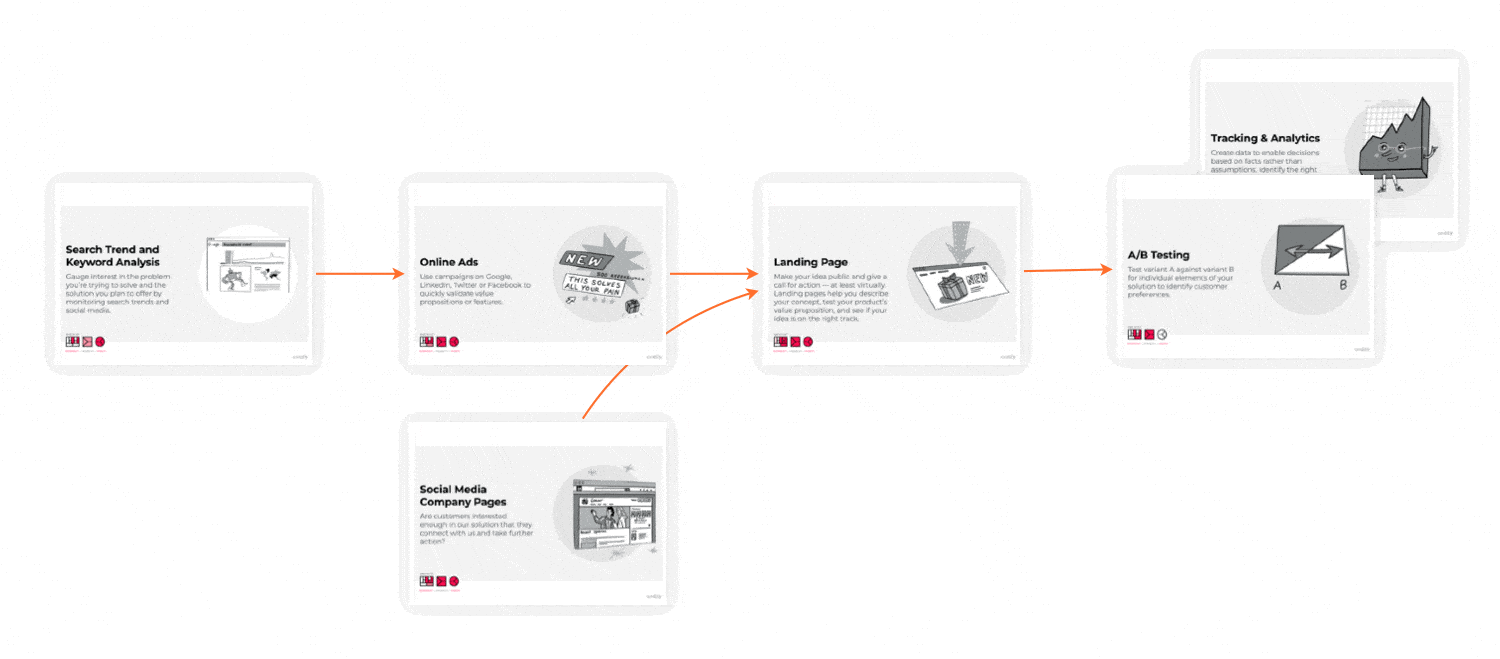
In the following, we will take a brief look at a special form of a lean experiment (or rather a lean experiment chain) that Eric Ries made famous and around which both the startup scene and corporate innovation units dance like around the golden calf: the MVP.
MVP stands for Minimum – or – Minimal Viable Product, depending on how you read it. The term was coined by Frank Robinson in the early 2000s, picked up by the Lean Startup community, and has undergone quite a change of meaning over the years. Frank’s original term was “the unique product that maximizes return on risk for both the vendor and the customer.” For Eric Ries, the MVP is that version of a new product that allows a team to gather the maximum amount of validated knowledge about customers with the least amount of effort.
However, many startups and companies today view the MVP as the first version of their product that brings exactly that minimum set of features with which they can convince their first customers to pay. Loosely speaking, they ask themselves, “What is the minimum feature set that will allow our customer to grant us straight pay to ripen our banana with them?” Looking at large companies that want to become agile, the confusion becomes even greater as they swing to the other end of the perfection spectrum, and they often view an MVP as an already fully functioning pilot or public beta of a product, which it definitely is not. Even more whacky is only the understanding in public administration, which lets McKinsey & Co. talk them into thinking that barely tested mockups and click dummies are MVPs.
So the range of opinions about what an MVP is is pretty wide. There is also a lot of discussion about the M in front of VP. Some say it should be Minimal in the sense of “barely sufficient” (also our favorite). Others say it should be Minimum in the sense of “least quantity, lowest possible amount.” In our opinion, the latter is misleading and fuels the above spectrum of understandings, but has nevertheless become the standard in management discourse and the startup scene, which is why we do not try to swim against the tide and use the word as well, but mean our understanding of the term. So you could say that the MVP discussion has become a kind of philosophical minefield. At co:dify, we understand an MVP more as a process and a state of mind: process in the sense of a chain of experiments that build on one another and test all aspects that are important to a critical mass of users and customers defined by the team in terms of purchasing and usage decisions. Often this can – but need not – result in a more comprehensive prototype, as the examples below show. By the state of mind, we mean the awareness that an MVP is allowed to evolve over time à la “sense and respond” and that our intention is not primarily to have to reach a milestone, a public beta, or a pilot.

(for more info, check out this wonderful article by David Bland).
Examples of successful MVPs
- The aforementioned Zappos concierge MVP experiment.
- Joel Gascoigne’s landing page to test the value proposition of the service that would later become Buffer.
- Lufthansa iHub’s “Mission Control” concierge MVP to test customer interactions and demand.
